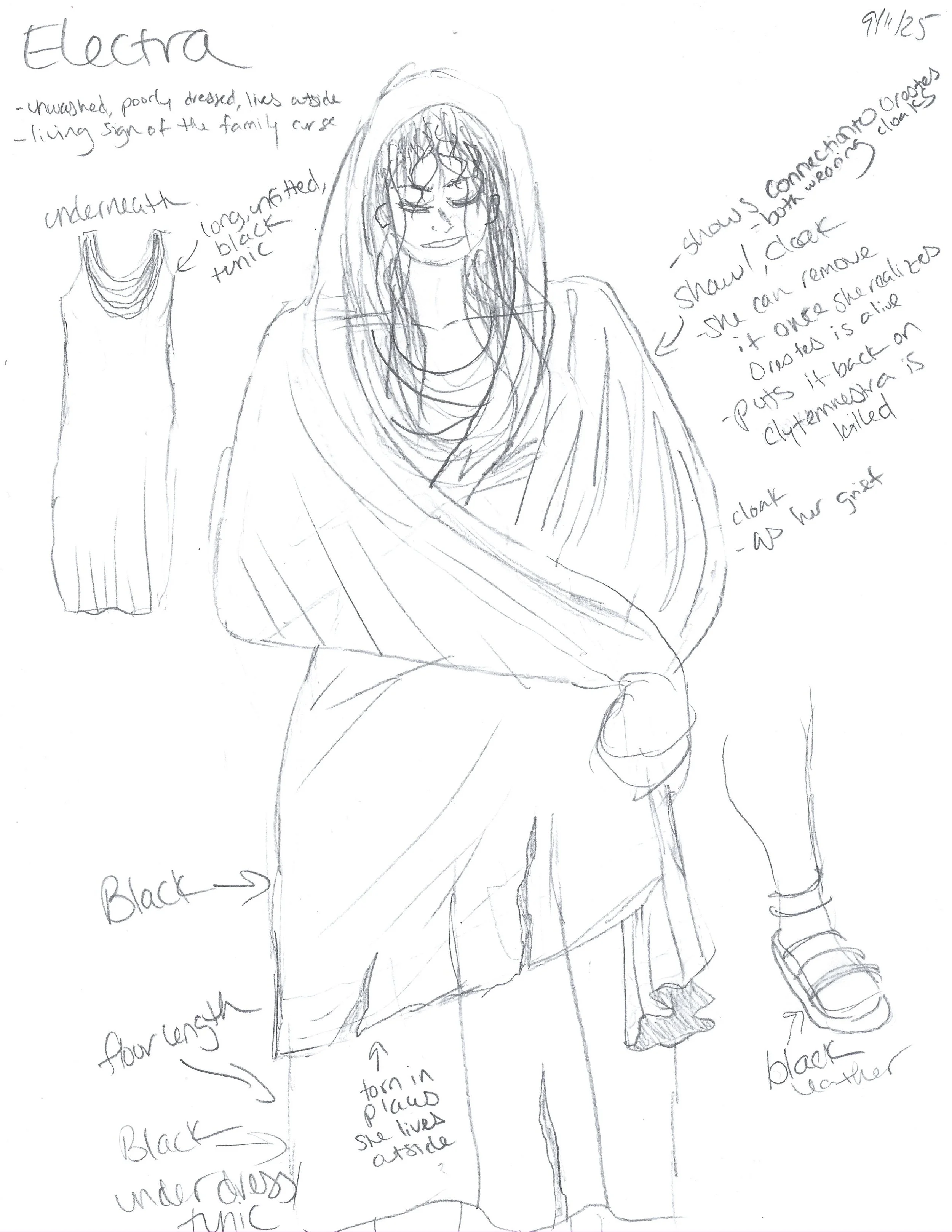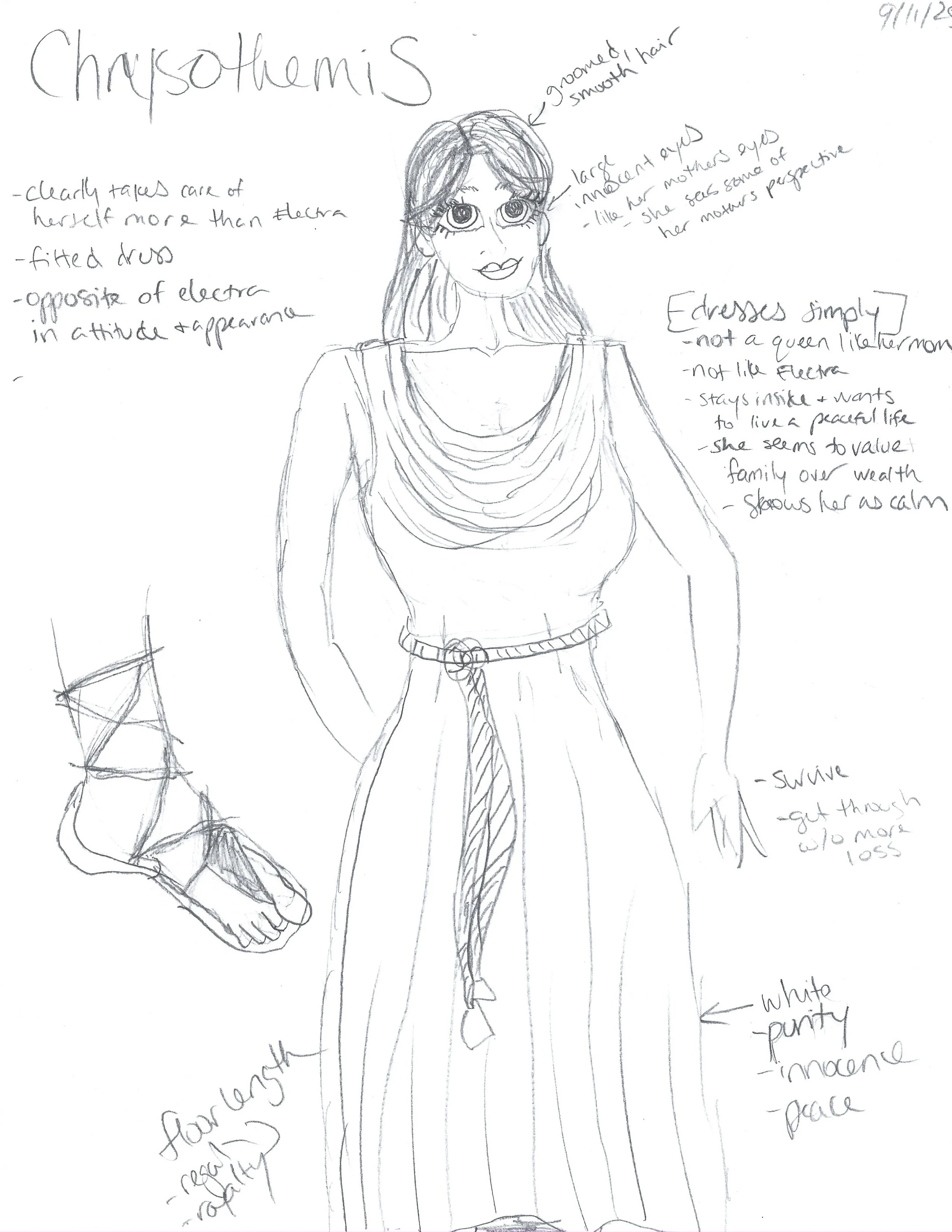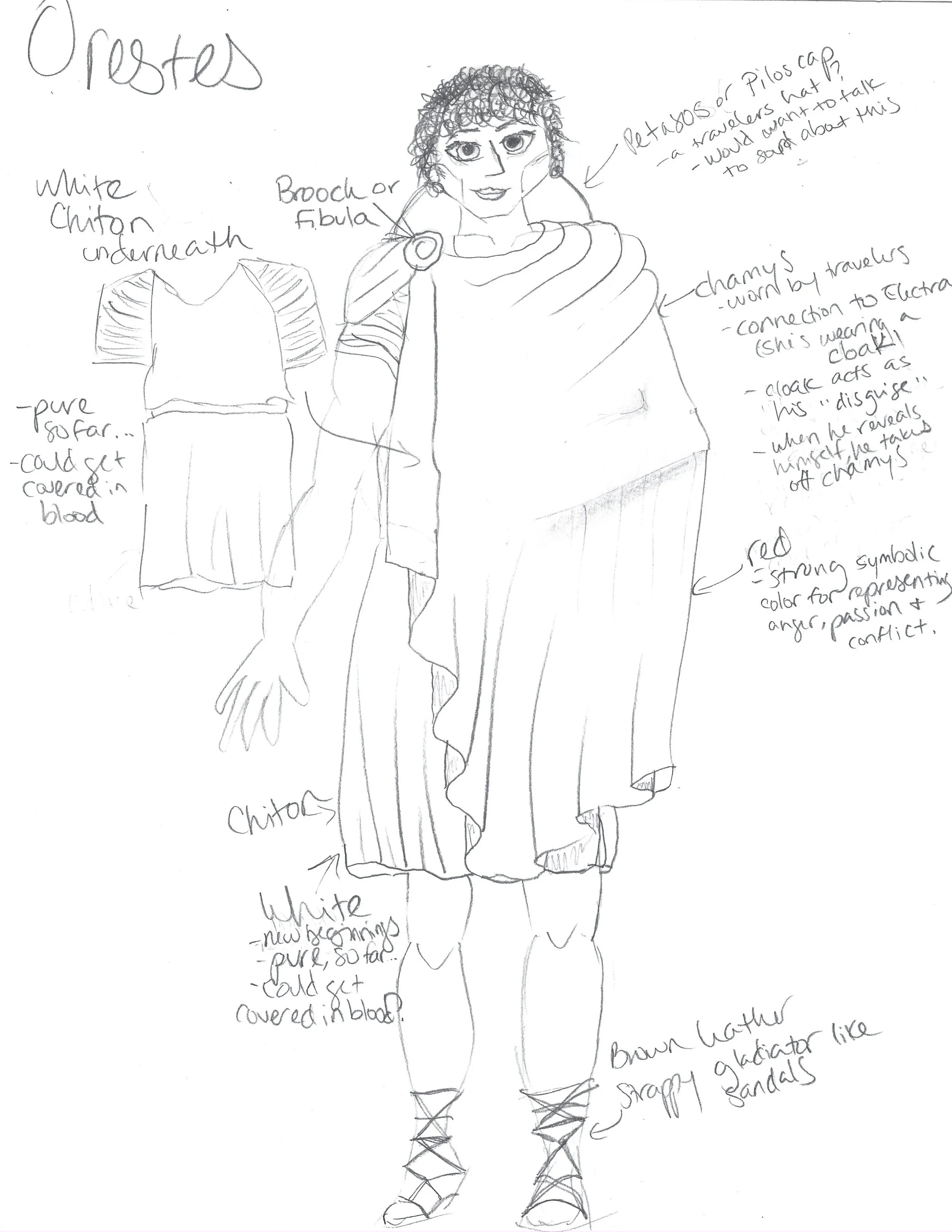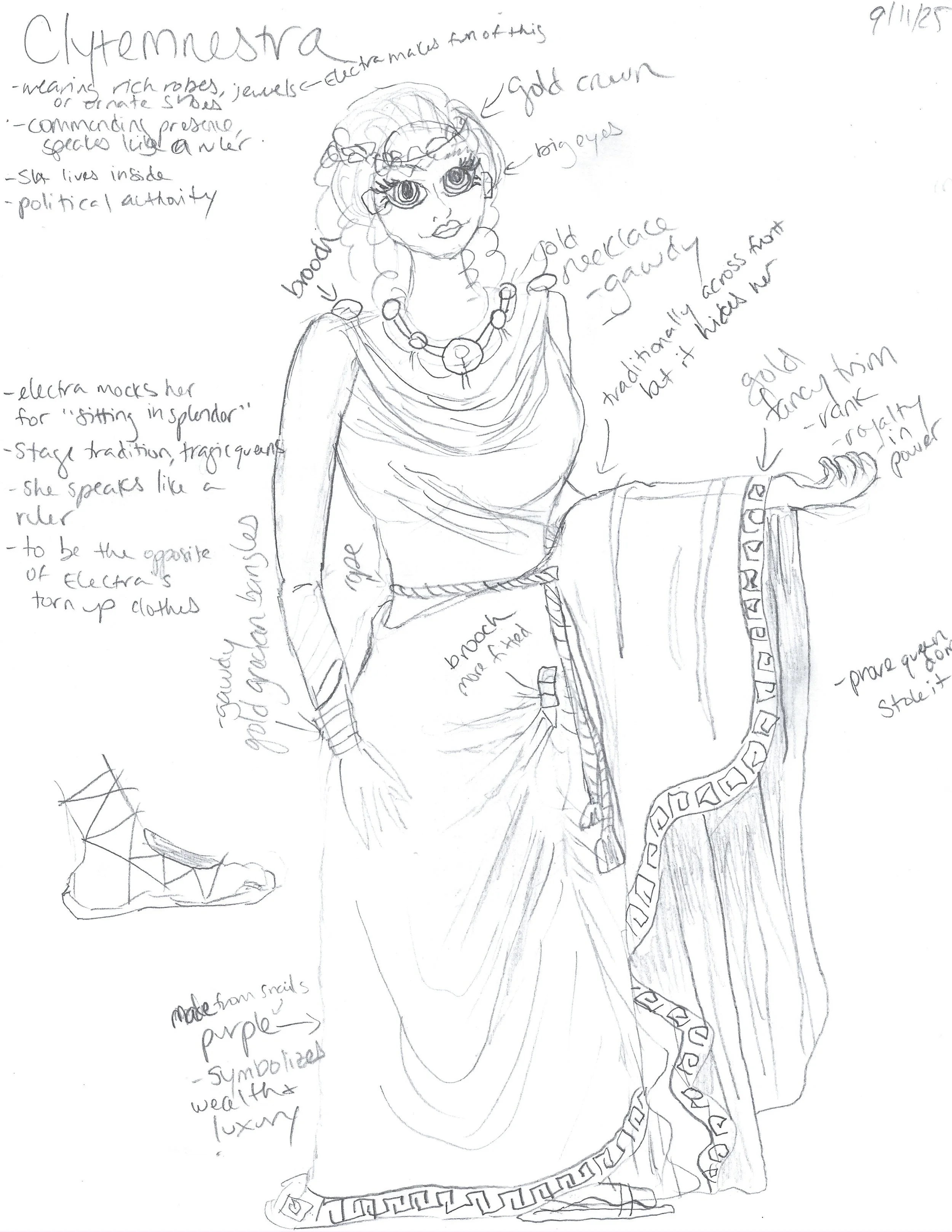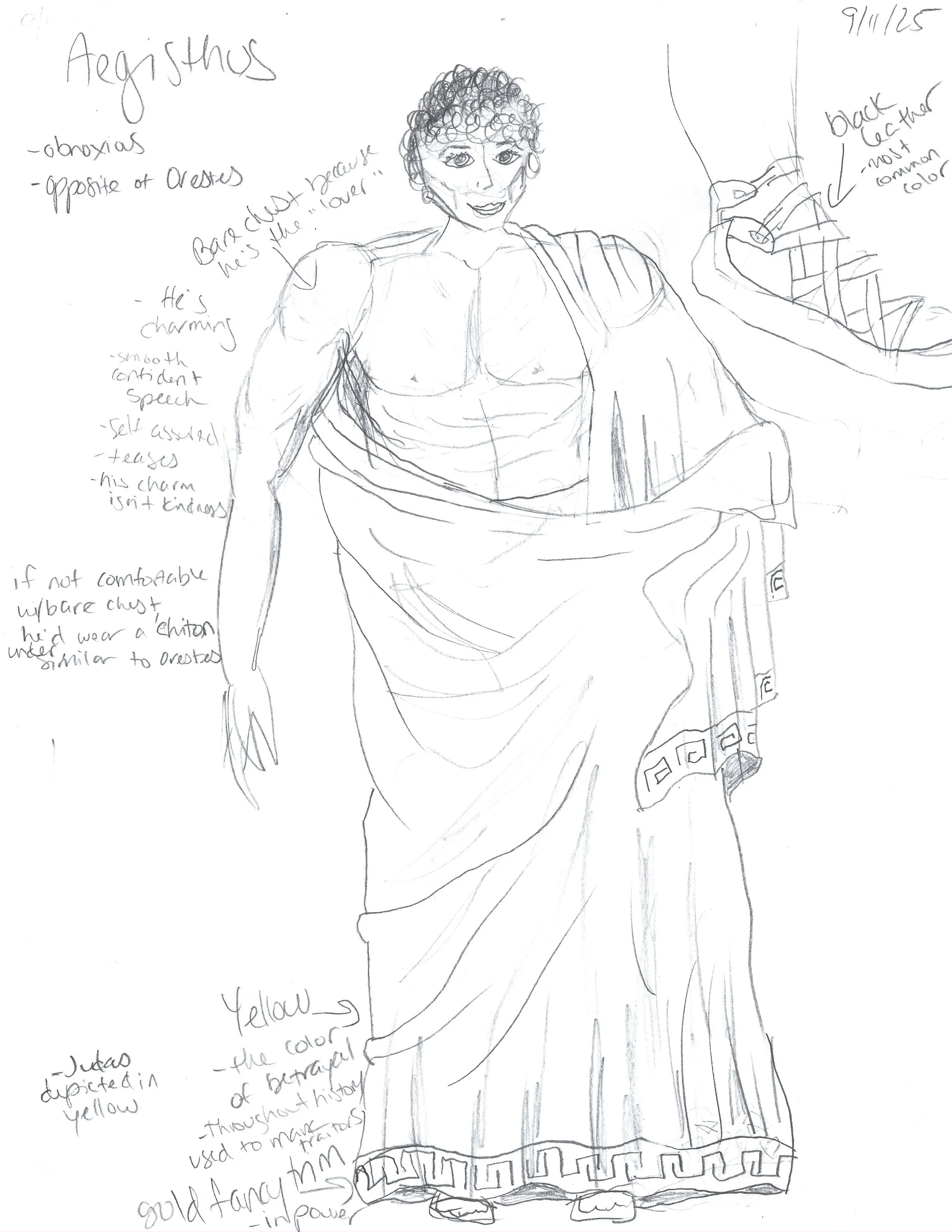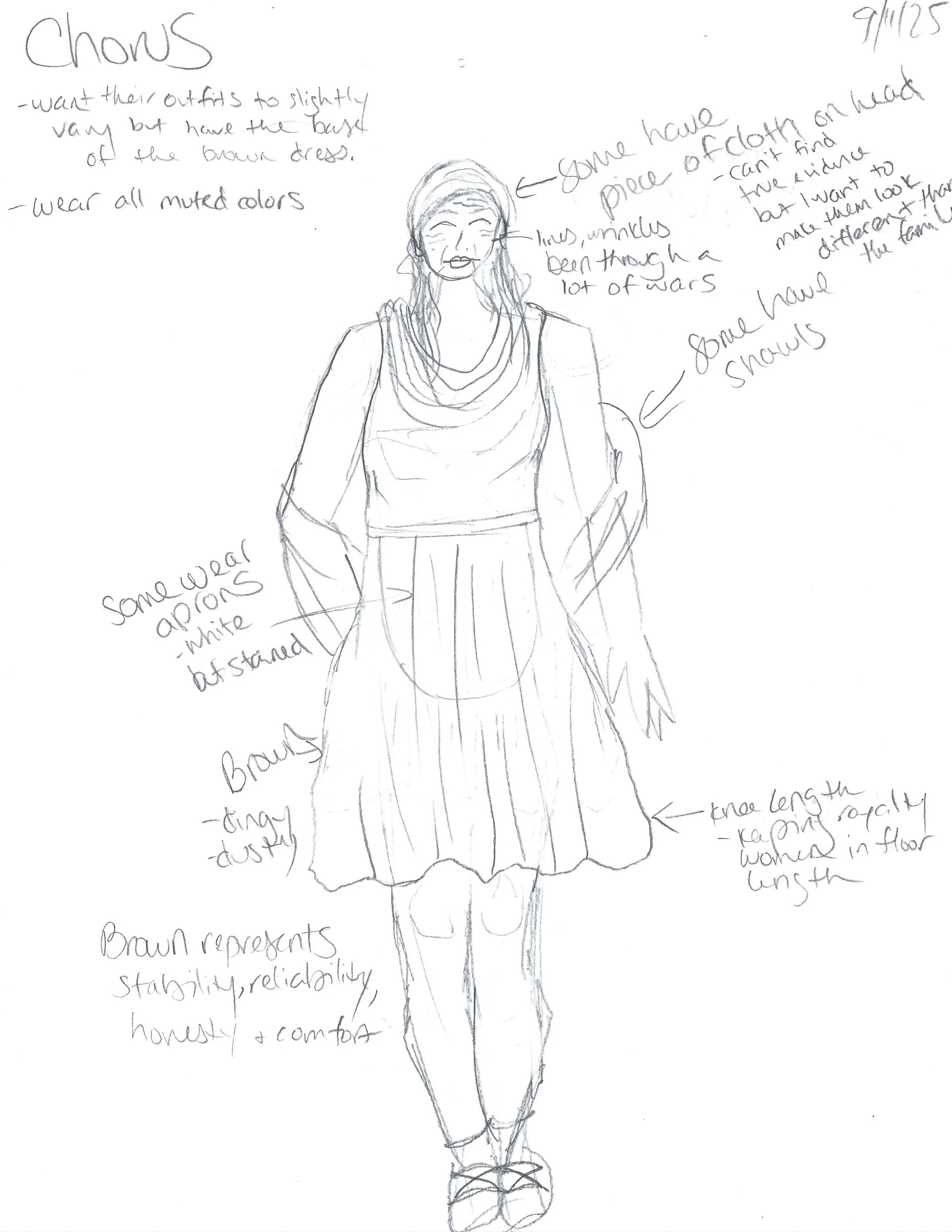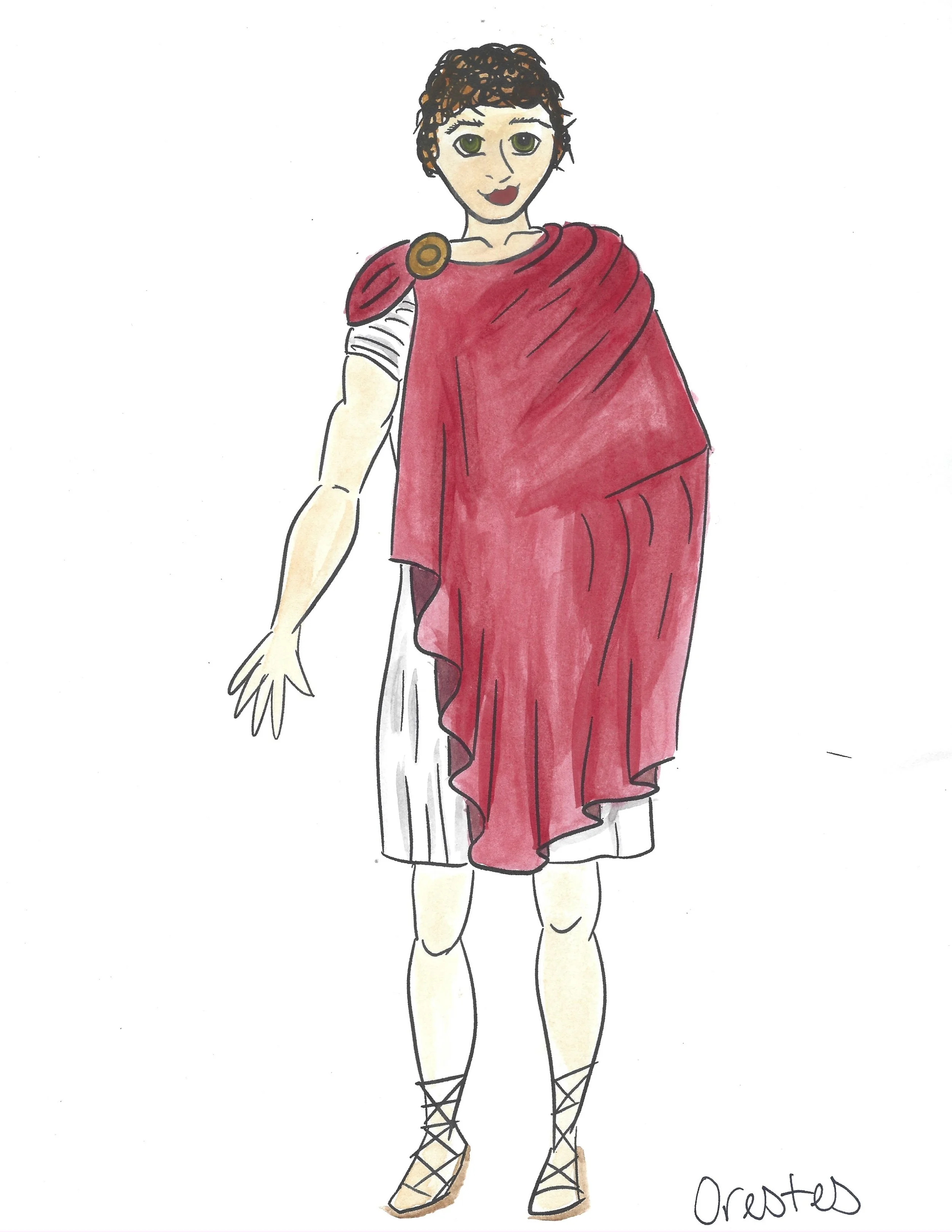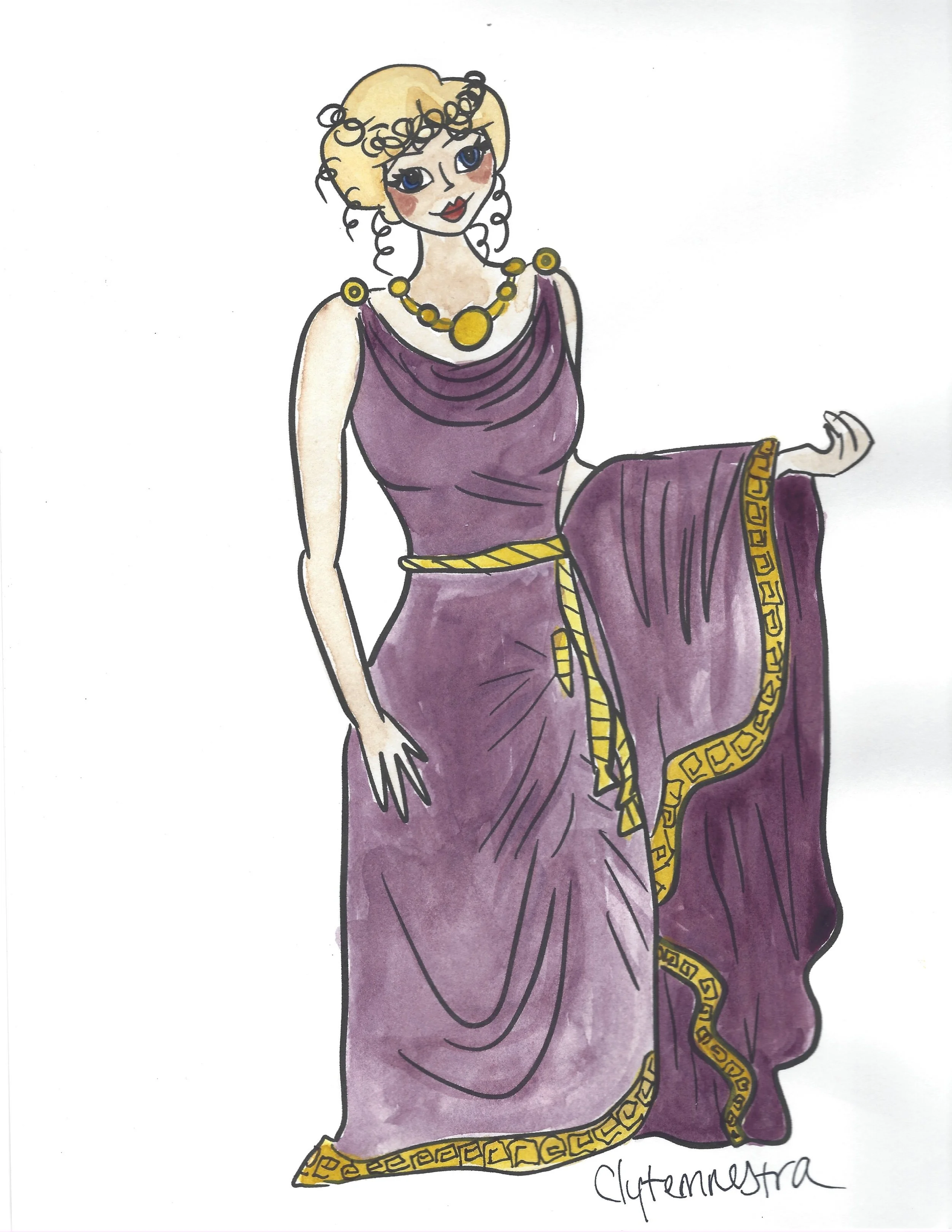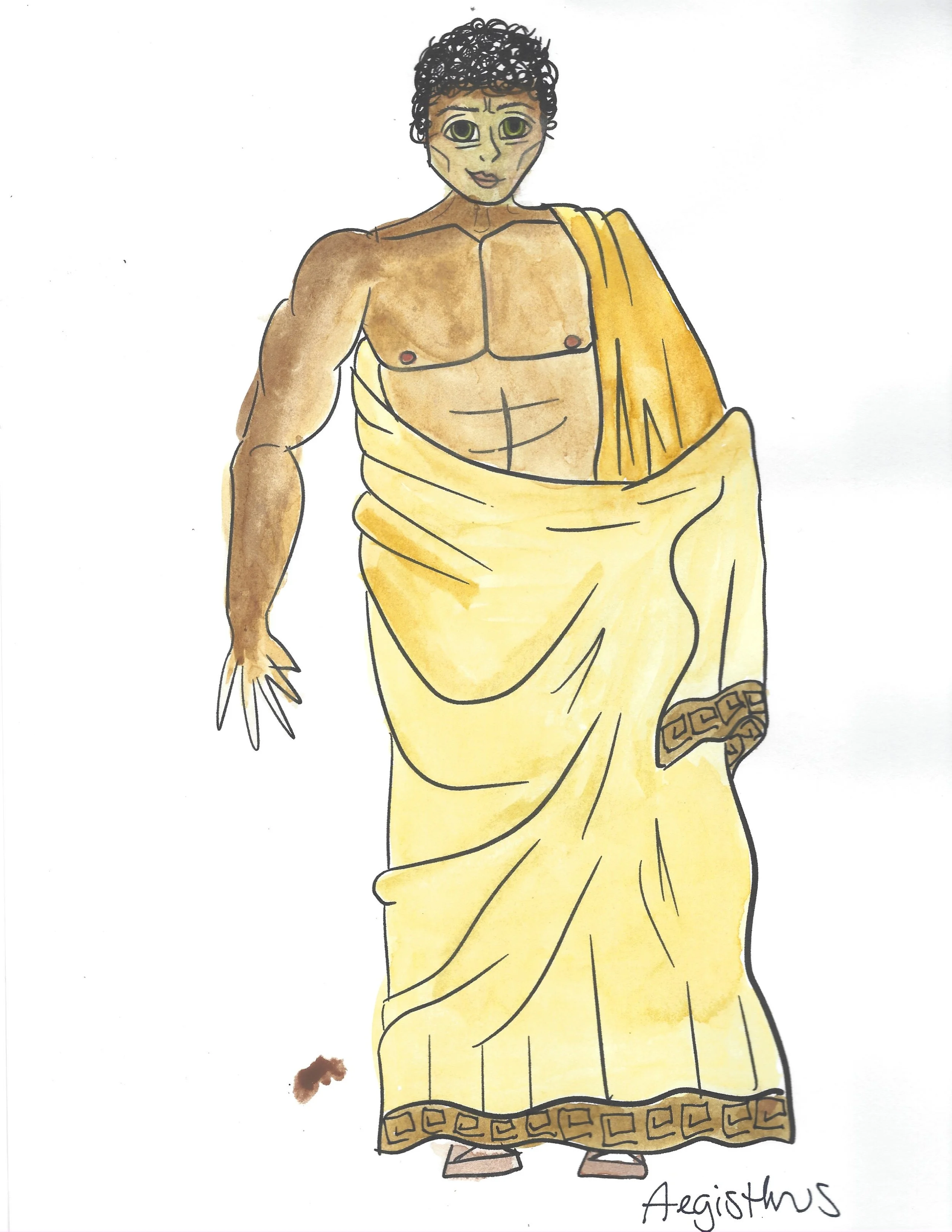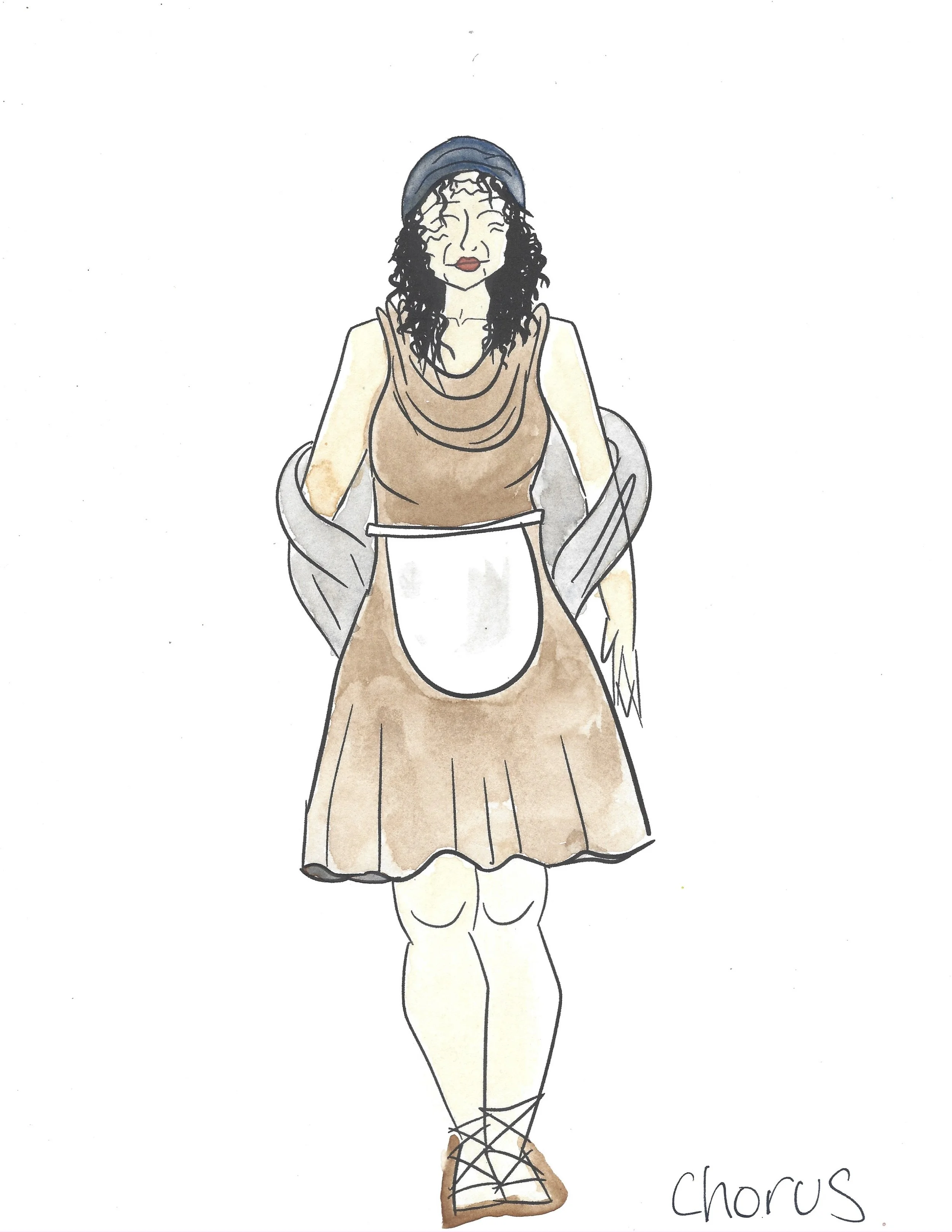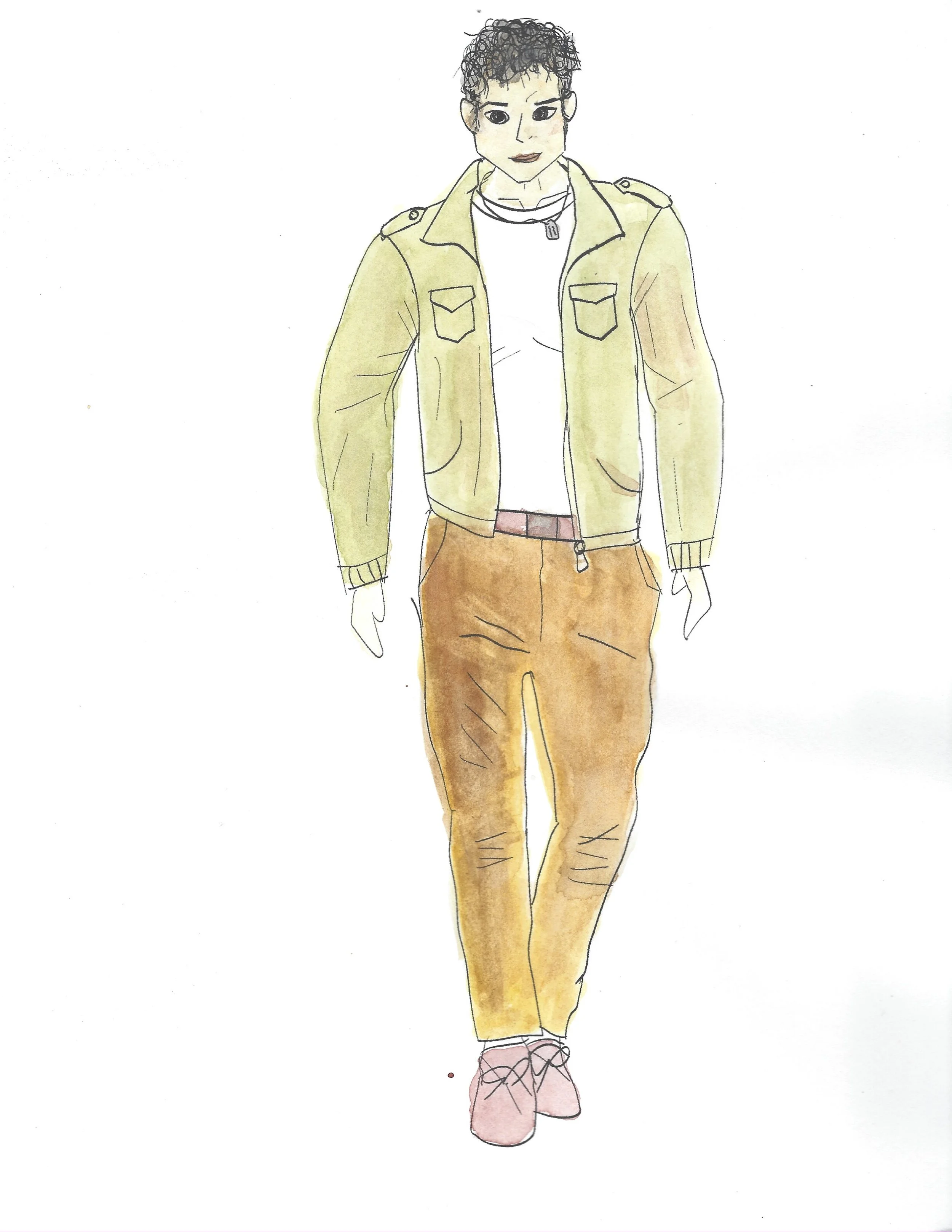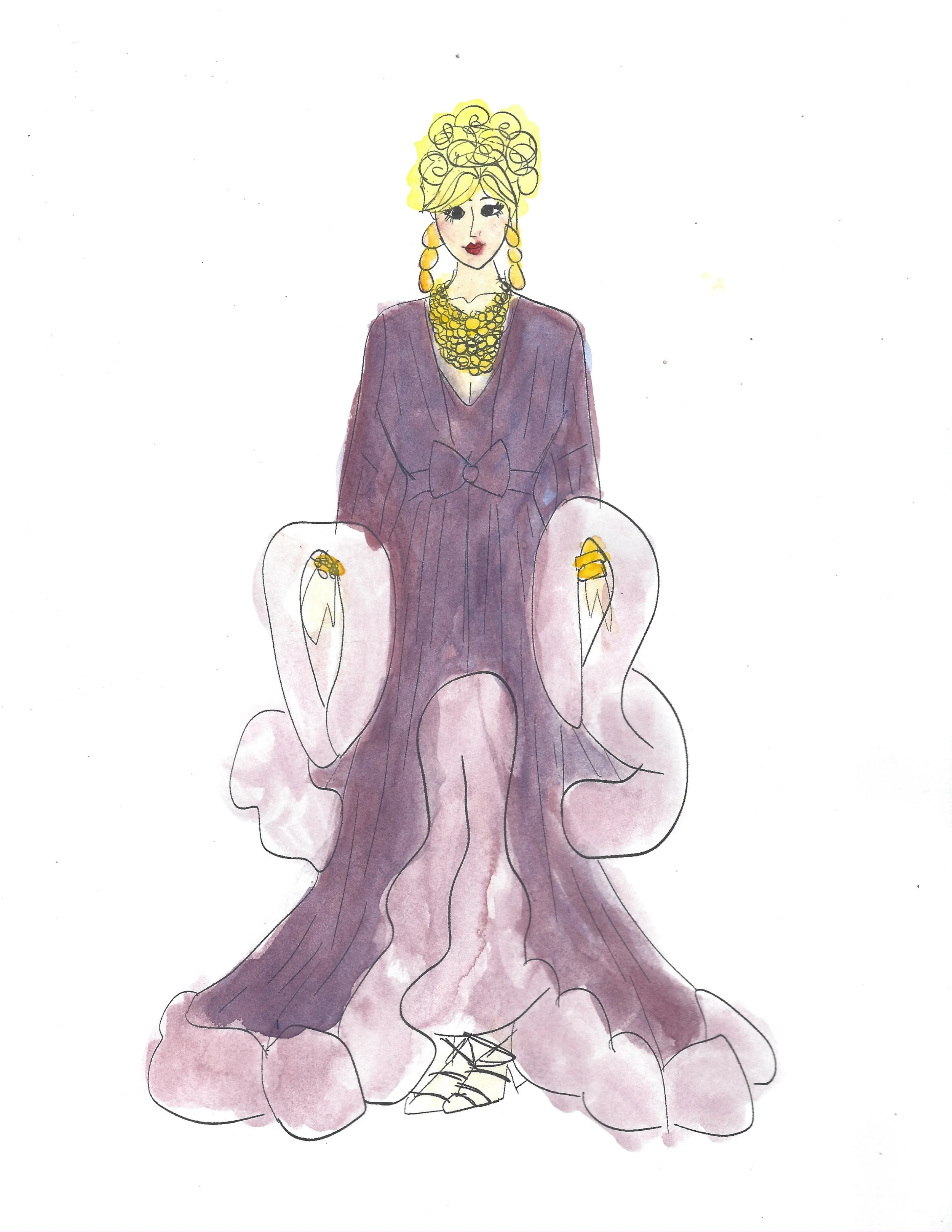Costume Design > Designs > Electra
Electra & Electra reimagined
Electra
Cycle of violence and grief
Electra
For this project, I reimagined Sophocles’ Electra by dressing the characters in traditional Grecian clothing from the 5th century BCE. My goal was to explore how historical accuracy in costume could enhance the emotional depth and cultural authenticity of the play.
I researched ancient Greek dress through museum collections, archaeological findings, and classical art such as vase paintings and marble sculpture. This included studying garments like the chiton, peplos, and himation, along with ancient dyeing methods that produced natural tones from plants and minerals. These sources guided my choices of silhouette, fabric, and color palette.
Each costume reflects both social role and emotional state. Electra wears darker, worn fabrics that show mourning and isolation. Clytemnestra is dressed in rich layered textiles symbolizing power and vanity. Orestes’ structured garments suggest military discipline and duty.
I also examined how linen and wool were draped and fastened using fibulae, and recreated these techniques in my renderings. The result was a collection grounded in historical research yet expressive of the play’s enduring themes (grief, vengeance, and fate) through authentic movement, texture, and form.Rough Sketches
Rough Sketches
Final Sketches (Water color)
Electra Reimagined
Electra meets Haunting of Hill House
ELECTRA REIMAGINED
This modern reimagining of Electra places the story within a decaying 2025 mansion inspired by The Haunting of Hill House. The house itself becomes a reflection of the family’s psychological decay, filled with echoes of grief, guilt, and unresolved anger. I designed the costumes to bridge classical and contemporary worlds, using muted tones, layered textures, and silhouettes that suggest both memory and confinement. Each character carries the weight of the past through what they wear, as if haunted by their own history. The goal of this project was to show how ancient tragedy can live inside a modern setting and how trauma can linger like a presence that refuses to leave.

